![]() Download PDF Version [0.35Mb]
Download PDF Version [0.35Mb]
- “Good Enough” is much more than that
- 100% Copper Electrical System
- Going to Market Through Education
Power Protection Products, Inc. is a design, construction, management and consulting organization, headquartered in Omaha with offices in Des Moines, Kansas City and St. Louis, the company deals primarily with critical load facilities, including data centers. The firm recently opened a low-cost 2,000–sq ft data center in its headquarters, shown here.
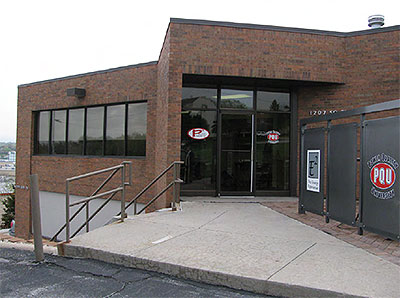
Colocation data centers, with their variety of usually unrelated tenants, are very costly to build and operate. Their owners must carefully balance the size of their installations against the volume of their expected customer base so that both the center and its customers can share competitively in the cost of essential infrastructure: power and power backup, cooling, communications and security. The footprints of so-called “colo” centers vary widely, but most fall between several thousands to several tens of thousands of square feet of IT space, sufficient to house up to hundreds of server racks. Much larger centers with ten or more times that amount of floor space are not uncommon. User fees vary with the type of service provided, but basic costs often begin quite low.
Is there a modestly sized but still viable alternative for smaller customers? Power Protection Products Inc. (P3) believes there is. It is an Omaha, Nebraska-based company engaged in the design, construction, servicing and ongoing maintenance of critical-load facilities, including but not limited to data centers. The company also provides equipment and infrastructure for its projects as requested. With additional offices in Des Moines, Kansas City and St. Louis, the company can potentially attract medium-to-large organizations, which for various reasons choose to operate their own data centers rather than outsource IT functions to a colo.
Keeping IT operations in-house can and often does work for larger companies but maintaining an in-house data center doesn’t necessarily fit well for smaller organizations, which, notwithstanding their size, do have a genuine need for security, off-site back-up, reliability, accuracy and availability for their business records.
“Good Enough” is much more than that
Brian Branigan, Power Protection Products’ president, saw a potential business opportunity here. “We specialize in all types of critical facilities,” says Mr. Branigan, “and we spend an awful lot of time in data center environments. We have a completely scalable, modular system that allows us to accommodate smaller customers and to grow with their needs. Our typical customer is a small IT guy or gal trying to provide back-up for his or her customers; maybe a doctor’s or lawyer’s office, someone who only needs one or two racks. So we designed and built our own downsized data center with our system and that specific type of customer in mind. We half-jokingly call it ’good enough’, but what we actually offer is a smaller data center, more than adequate to meet the needs of end users. The difference between our center and the next tier up is the cost of putting the data center together. Ours is more of a home-grown approach, a boutique design for a more intimate relationship with the tenants.”
Mr. Branigan appropriately named his facility LoCoCoLo, the low-cost colocation center, but an inspection shows that it contains virtually all of the components of a larger facility, scaled down to meet the need. It comprises some 2,000 sq ft of IT space on the ground floor of the P3 headquarters building. The entrance is man-trapped, just as are those in large centers, and the usual security appliances can be found in all rooms and corridors. The center operates on 480 V and was designed for 5 kW per rack, plus an additional 5 kW for chillers and cooling. It is equipped with a 15-ton chiller and can be expanded to 50 tons when the need arises.
Size aside, there are interesting features to the LoCoCoLo center that underscore its adequacy. Mr. Branigan explains: “We have one 80-kW generator with a UPS, but we’re also situated right near a cross-tie on the utility grid. If one side of that grid were to go down, it would take less than an hour to tie in the other side. We’re protected by our UPS and because we have enough generating capacity and fuel reserve for four days of operation. Our power and cooling capacities are somewhat oversized for our current load, which you’d expect, and we are prepared for future expansion if and when that becomes necessary (Figure 1).
“We use a unique form of what is called in-row coupled cooling in which we place individual cooler units directly in the server-rack rows where they’re close to the heat sources. We used the same cooling system in our design for the 1,150-server, 21-Tflop supercomputer at a nearby university. The in-row coolers permit us to vary the cooling rate as needed very rapidly, and equally important, they enable the coolers to operate 30% more efficiently than the perimeter coolers you’d see in a conventional center. We can pass those and other savings along to our tenants in the form of significantly lower rental rates (Figure 2).
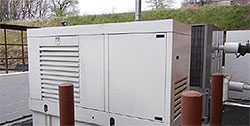 Figure 1. The LoCoCoLo data center has one 80-kVA generator and an associated UPS, but the facility is located nearby a utility grid cross-breaker. A grid outage on one side of the breaker can be re-routed to the center within an hour, and the generator shown above has a four-day fuel capacity.
Figure 1. The LoCoCoLo data center has one 80-kVA generator and an associated UPS, but the facility is located nearby a utility grid cross-breaker. A grid outage on one side of the breaker can be re-routed to the center within an hour, and the generator shown above has a four-day fuel capacity.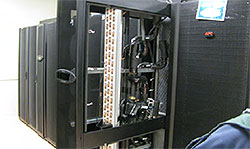 Figure 2. An in-row cooler shown ready for installation between two server stacks. Placed near the heat source, the rapid response, copper-coil coolers operate with 30% greater efficiency than conventional peripheral cooling system, a major energy and cost savings.
Figure 2. An in-row cooler shown ready for installation between two server stacks. Placed near the heat source, the rapid response, copper-coil coolers operate with 30% greater efficiency than conventional peripheral cooling system, a major energy and cost savings.100% Copper Electrical System
“We also installed a unique, modular breaker system in which the connectors are already installed to feed the racks. They’re kind of new to the industry and allow us to scale up for more racks without having to open the breaker cabinets and call in a contractor. Of course, we go by generally accepted practices in wiring the building to NEC standards, but we see the Code as a minimum standard that’s designed to protect people and not necessarily ensure that equipment runs as well as it must. So, for example, we have lower resistance to ground than the Code calls for, and it’s also important that our all-copper ground system can be inspected, tested once a year and monitored throughout the life of the facility. We have two driven electrodes, but a single ground connection to all equipment. We don’t use building steel in our system because we cannot be assured of continuity, and I personally prefer a mechanically connected installation with approved copper-base couplers. We like to maintain five ohms or less resistance in our grounding system. Yes, some facilities require two ohms or less, but we’ve found that five works just fine for our purposes.
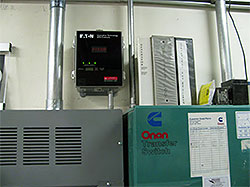 Figure 3. The black-colored surge protection device (SPD) mounted atop the LoCoCoLo service entrance cabinet protects the center from surges as high as 300 kA. It is very important that SPDs are securely bonded to a robust, low-resistance, single-point grounding system. Without proper grounding, SPDs cannot function properly and will not protect the electrical system on which they are installed.
Figure 3. The black-colored surge protection device (SPD) mounted atop the LoCoCoLo service entrance cabinet protects the center from surges as high as 300 kA. It is very important that SPDs are securely bonded to a robust, low-resistance, single-point grounding system. Without proper grounding, SPDs cannot function properly and will not protect the electrical system on which they are installed.“All mission-critical electrical systems, and data centers in particular, need protection from line-voltage surges. Our LoCoCoLo center is equipped with the type of surge protection device (SPD) it needs to avoid these threats (Figure 3). But people should be aware that even the best SPD you can buy won’t work properly — or even work at all! — if it isn’t bonded to a robust, low-resistance grounding system. Ours is correctly installed and grounded and protects our center to surge currents as high as 300 kA.
“The facility is 100% copper-wired with dual circuits to each rack, primarily because of the need for reliability, but also because that’s the way we do things around here. Ours is a 40-year-old building, but we’ve renovated it along the way and included a complete upgrade of the electrical system, and all those upgrades were in copper.”
Boutique-sized data centers: a novel idea from an innovative company that appears to offer valuable cost advantages for the small business owner without sacrificing the service and dependability of larger colos. Not surprisingly, the company’s exclusive use of copper in power, communications and grounding systems is an important element of the center’s demonstrated reliability.
Power Quality University: Going to Market Through Education
Power quality (PQ) means the delivery of correct, stable voltage and current to the load, free from interruptions, harmonics and other waveform distortions. It’s been recognized for years but has gained tremendous importance with the proliferation of critical-load facilities such as data centers. Achieving PQ to the reliability levels those facilities need is not a simple matter. It literally involves “thinking beyond the Code”, with its traditional focus on safety, toward a stronger emphasis on the need for equipment to work properly and reliably, as close to 100% as possible. Power Protection Products Inc. recognized the need to instill an understanding of PQ principles to electrical technologists at all levels, especially those working with critical-load installations. Toward that end, P3 instituted an educational series called Power Quality University, a monthly series of half-day seminars presented by the company at each of its four offices. Topics addressed in the seminars range from data center design, cooling, energy savings and storage, through special equipment issues, harmonics avoidance, surge protection and the all-important principles of power quality grounding and monitoring.
Information about the program is available at Power Quality University or by calling P3 at (402) 393-1223.
The Principal
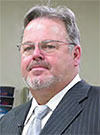 Brian Branigan, president of Power Protection Products, can be reached at (402) 393-1223, [email protected].
Brian Branigan, president of Power Protection Products, can be reached at (402) 393-1223, [email protected].
